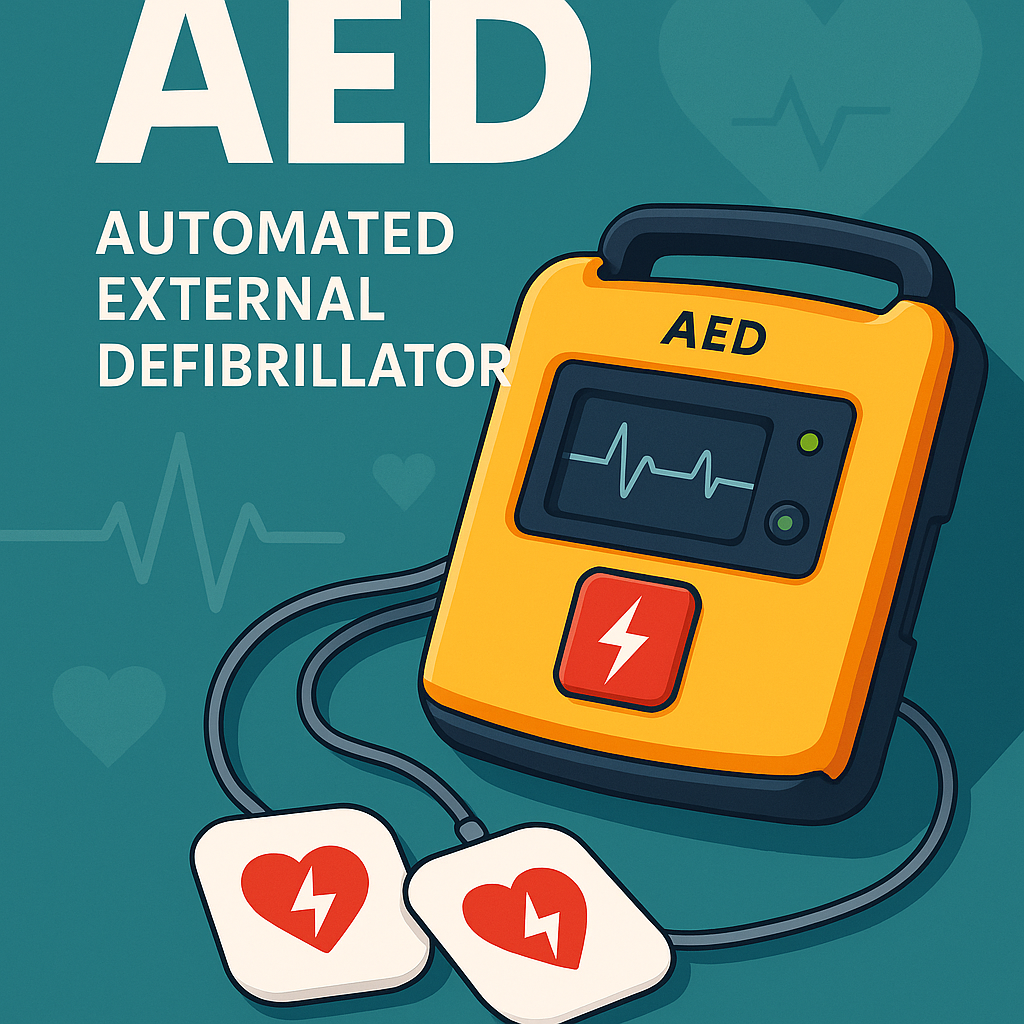- What is an AED and Why It Matters
- Purpose of an AED
- Common Causes of Cardiac Arrest
- Signs You Need an AED
- Step-by-Step Guide on Using an AED
- Step 1: Call for Help
- Step 2: Retrieve the AED
- Step 3: Turn on the AED
- Step 4: Attach the Pads
- Step 5: Analyze the Heart Rhythm
- Step 6: Deliver Shock
- Step 7: Continue CPR
- Trainer Tips for Using an AED
- Frequently Asked Questions
- How do I know if it’s needed?
- Can it cause harm?
- Key Takeaways
- You’ve Got This!
Glossary: AED (Automated External Defibrillator) Definition
An AED (Automated External Defibrillator) is a portable device that automatically diagnoses and treats life-threatening cardiac arrhythmias through defibrillation. Essentially, it’s a lifesaving tool designed to help restart the heart during sudden cardiac arrest.
—
What is an AED and Why It Matters
Picture this: you’re enjoying a lovely day at the park when suddenly someone collapses. Heart-stopping moments like these can happen at any time and to anyone. That’s where an AED comes into play. It’s like having a superhero waiting in the wings, ready to step in when every second counts.
Purpose of an AED
– Restores Heart Rhythm: An AED delivers a controlled electric shock to the heart, helping to restore its normal rhythm.
– User-Friendly: Designed for use by the public, AEDs provide step-by-step audio and visual instructions, making them accessible even to those with no medical training.
– Saves Lives: Quick access to an AED can significantly increase the chances of survival after cardiac arrest.
—
Common Causes of Cardiac Arrest
![Generate a high-quality, realistic 4K image illustrating [TOPIC]. Each image should have a slightly](https://firstaidglossary.com.au/wp-content/uploads/2025/10/generate-a-high-quality-realistic-4k-image-illust-1760697472.png)
Understanding when to use an AED is crucial. Here are some common scenarios where an AED may be needed:
– Heart Disease: Individuals with pre-existing heart conditions are at higher risk.
– Traumatic Events: Severe injuries or incidents can cause the heart to stop.
– Extreme Physical Stress: Intense exercise can trigger sudden cardiac arrest, especially in those with underlying conditions.
Signs You Need an AED
In a pinch, it might be hard to know when to act. Here are key indicators that an AED may be necessary:
– Unconsciousness: The person is unresponsive and cannot be awakened.
– Abnormal Breathing: Gasping, irregular breathing, or no breathing at all.
– No Pulse: Lack of a heartbeat—check by feeling for a pulse in the neck or wrist.
Step-by-Step Guide on Using an AED
When faced with a medical emergency, getting the AED and yourself into action can be like starting an engine—you may need a little initial force, but once you’re going, just follow the steps! Here’s how to effectively use an AED:
Step 1: Call for Help
– Always call emergency services (e.g., 000 in Australia) first if you’re not alone. It’s crucial to have professional help on the way.
Step 2: Retrieve the AED
– If one is nearby, grab it! Many public places, such as schools, gyms, and airports, have them readily available.
Step 3: Turn on the AED
– Most AEDs turn on automatically when you open the device or push a button. Listen carefully to the prompts.
Step 4: Attach the Pads
– Expose the person’s chest and place the adhesive pads as instructed (usually one on the upper right chest and one on the lower left).
Step 5: Analyze the Heart Rhythm
– The AED will assess whether a shock is needed. Make sure nobody is touching the person during this process (like a team huddle where everyone stands back).
Step 6: Deliver Shock
– If advised, stand clear and press the shock button. The AED will deliver the shock. This might feel like flipping a switch to power up a device!
Step 7: Continue CPR
– If trained, continue with CPR until emergency responders arrive or the person shows signs of life (breathing or movement).
—
Trainer Tips for Using an AED
![Generate a high-quality, realistic 4K image illustrating [TOPIC]. Each image should have a slightly](https://firstaidglossary.com.au/wp-content/uploads/2025/10/generate-a-high-quality-realistic-4k-image-illust-1760697526.png)
– Stay Calm: Panic can cloud your judgment. Take a deep breath and know you’re doing the right thing by acting.
– Follow Instructions: Trust the AED’s voice prompts. It’s like having your very own coach guiding you through the process.
– Keep Practicing: Familiarize yourself with AEDs by taking part in first aid training. Practice makes perfect!
Frequently Asked Questions
How do I know if it’s needed?
If someone collapses, is unresponsive, and shows no signs of life or normal breathing, it’s time to use an AED.
Can it cause harm?
AEDs are designed to analyze and only deliver shocks when necessary, so using one properly is safe. Remember, doing something is always better than doing nothing!
—
Key Takeaways
– AEDs are life-saving devices that can restart a heart in cardiac arrest situations.
– Immediate recognition of the signs indicating the need for an AED can make a difference between life and death.
– Following the steps to use an AED is straightforward, and practice at workshops can boost your confidence.
You’ve Got This!
Just like learning to ride a bike or baking your first cake, mastering AED usage might seem daunting at first, but with a little practice and knowledge, you’ll be ready to face a crisis head-on. Equip yourself with first aid training and the confidence to act—that’s how we can make a difference in our communities.
By preparing today, you become a bearer of hope for someone in need tomorrow. Let’s keep those hearts beating!

Leave a Reply